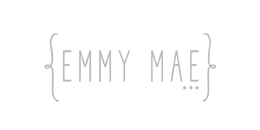Wedding Gown Glossary
First time buying a wedding gown? You are not alone.
The world of wedding gowns is vast and can be overwhelming, so we have broken down all of the gown terminology that you might need to know so that you can get you on your way to finding the gown of your dreams!
Gown Silhouettes
A-Line
Resembling the letter “A”, this gown silhouette is narrow thru the bodice, with vertical seams allowing the skirt to gradually flare out at the hem.
Ball Gown /Full Skirt
A full-skirt wedding dress, or ball gown, features a defined, fitted bodice, cinched waist (dropped or natural) and a very full skirt.
Column
Very similar to the sheath gown (see below), the column dress can be fitted at the bodice but straight and narrow to the hem.
Empire
The empire waist flares close to the bust as opposed to at the actual waistine–from there, it typically flows freely/loosely from the rest of the body.
Mermaid
The mermaid gown will be tightly fitted against your legs to the knees and the skirt will expand from there. It is often confused with the trumpet style (see below).
Sheath
The sheath dress, also known as a column dress, is a sculpted, body-hugging shape that is fitted from bodice to floor.
Trumpet
The trumpet gown, also known as the fit and flare, is fitted through the body, especially at the thighs, and has a straight-lined skirt that subtly flares from the knee toward the hem to form the ‘trumpet’ shape.
Necklines
Off-the-shoulder
This type of neckline sits below the shoulders. You can find it with or without sleeves.
Sweetheart
This type of neckline looks like the top half of a heart. It has an open and curved shape.
Straight
Often seen on strapless dresses, it is as it sounds, straight across. It offers a little more coverage than the sweetheart.
Sabrina/ Bateau
This neckline has single unbroken curve or swoop that runs from one shoulder to the other. You can find it with or without sleeves
Halter
A halter neckline has two straps that wrap around the neck, with wide opening for the arms and shoulders.
Scoop
This neckline is a classic “u” shape (dips in the front). You can find it with or without sleeves.
V Neckline
This neckline has a deep often dramatic “v” shaped plunge in the bust line. The plunge is often repeated on the back. You can find it with or without sleeves.
Veils
Blusher
A short, single layer of veil, the blusher is worn over the face before the ceremony, then either flipped over the head or removed thereafter.
Cathedral
The cathedral is the most formal. Sometimes referred to as the “royal veil,” this style falls 3.5 yards from the headpiece or hair.
Fingertip
This style extends from the head to the fingertips–typically 35 to 41 inches long.
Elbow
This style extends 25 inches from head to the elbows.
Mantilla
A long veil, this Spanish-style fabric features a circular piece of lace that frames the face. Made either of lace or lace-edged tulle, the mantilla is usually secured with a comb.
Trains
Brush
Short train that slightly “brushes” the floor. Similar to sweep train.
Chapel
The chapel-length train is the most popular among brides. Typically, a chapel-length train is a yard to four-yard long starting at the waist of the wedding dress.
Sweep
A sweep train is the shortest of the trains, as it barely touches the floor. Normally, the back hem of the train is an inch or two lower than the front hem.
Cathedral
The cathedral train is very dramatic and very long. From the waistline of the dress, a cathedral train can measure up to 7.5 yards long.
Semi-Cathedral
This a compromise between a chapel train and cathedral-length train. (See above)
Monarch /Royal
A monarch-length train is the longest of all trains, measuring up to 8 feet long.
Sleeves
Bell
A full sleeve that opens at the cuff and is very wide and flowing.
Cap
A short fitted sleeve that covers the top of your arm and shoulder area.
Illusion
Long, covers entire arm, with illusion fabric. Made to have the nude look as to match your skin.
Tulip
Overlapped sleeve that can be fitted or puffed. Trim varies.
Fitted
A sleeve without fullness. When it’s long, it often extends to a point at your hand.
Flutter sleeves
Flows from the shoulder out. Very loose and whimsical.
Fabric
Organza
A heavier version of chiffon, with more body and resilience. Used more for structure.
Brocade
A thicker woven fabric with raised design.
Crepe
A lightly thin fabric with a crinkly effect.
Charmeuse
A lightweight, semi-shiny fabric, similar to satin.
Chiffon
Made from silk or rayon, sheer and transparent.
Duchesse Satin
A silk/rayon combo made to look like satin.
Dupioni
Slightly rough, a coarse fiber that does that keeps its shape well.
Georgette
A sheer fabric of polyester/silk with a crinkle crepe-like surface.
Illusion
Sheer, net-like fabric used mainly for necklines and sleeves–gives the look of nude.
Silk
The most expensive and sought after fabric. Silk is a natural fiber and comes in many weights and weaves.
Satin
A heavy, smooth fabric with a high sheen on one side–can be polyester or silk.
Taffeta
Mainly a netted fabric used in wedding skirts and veils; silk, nylon, rayon polyester. Comes in many weights.
Tulle
Mainly a netted fabric used in wedding skirts and veils; silk, nylon, rayon polyester. Comes in many weights and textures (soft to stiff).
Velvet
Thick and soft and felted. A heavy weighted fabric used mainly for winter weddings.
Lace
Alencon
Needlepoint, usually a floral pattern outlined with heavy threads on a net background–occasionally accented with beading.
Re-embroidered Alencon
Embroidered Chantilly lace–heavy and capable of holding large quantities of beaded embellishments.
Chantilly
A delicate lace on fine netting which features floral patterns and scalloped edges.
Embroidered lace
Delicate patterns are tightly stitched onto an illusion base, forming the appearance of an applique.
Eyelet
Lightweight, often cotton, pierced with small holes finished with stitching creating a lace-like design.
Guipere
Heavy and/or larger patterns with no mesh background. Holds shape well.
Point d’esprit
Fine net with oval or square dots woven in grid-like pattern.
Ribbon
A cord of ribbon is used to draw and tie together two opposite edges at random over netting or mesh.
Skirt Styles
Ball Gown
Fitted at the bodice and waist, and then the skirt comes out into a bell/full shape.
Flared
Fitted at the waist, and then flares out into a trumpet type shape at the hem.
Front slit
A slit on a front side seam, usually along the leg and not in the middle, that allows for movement.
Pencil
Skirt hangs straight down, close to the legs, with no flare at the hem or accent at the waist–usually does not reach the floor.
Peplum
A short, single ruffle that hangs over a pencil skirt style. The ruffled layer may be horizontal in shape or extend down in a back V-shape.
Straight
The skirt extends straight down, with no flare at the hem. A longer version of the pencil skirt, this skirt might reach to the floor.
Tea Length
Shorter than a full-length skirt, it ends several inches above your ankles.
Tier
A series of layers or panels that fall in graduated lengths to the floor.
Wrap
The skirt overlaps and wraps at the waist.
Embellishment Terms
Applique
An applique is like it sounds, a decorative application of something on top of the fabric of a wedding dress– includes designs like fabric flowers, lace, tulle, beading of all types (see below). An applique can be simple or intricate.
Beading
Refers to the embellishments created by gluing or sewing crystals, bugle beads, pearls, gemstones or other accents onto the bodice, hems or other elements of the ensemble.
Bustle
If you have a long train, a bustle helps you transition from ceremony to reception. It is a sewn-in, ribbon or hooks that lift your train to the back of your dress, making it shorter so that you may move and dance with ease.
Crinoline (petticoat)
Refers to added extra fabric underneath the gown’s top layer or layers–usually a stiffer netting or tulle. Adds volume without adding much weight.
Edging
A narrow trim for hems, straps or veils, created from lace, embroidery, beading, or other accents.
Embroidery
Hand- or machine-stitched decorative designs created on the gown, bodice, train, or veil. Patterns vary from straight lines to intricate designs.
Ruching
Ruching is a sewing technique in which fabric or ribbon is gathered in a repeating pattern to form pleats, ruffles, or scallops–usually around the bodice.













